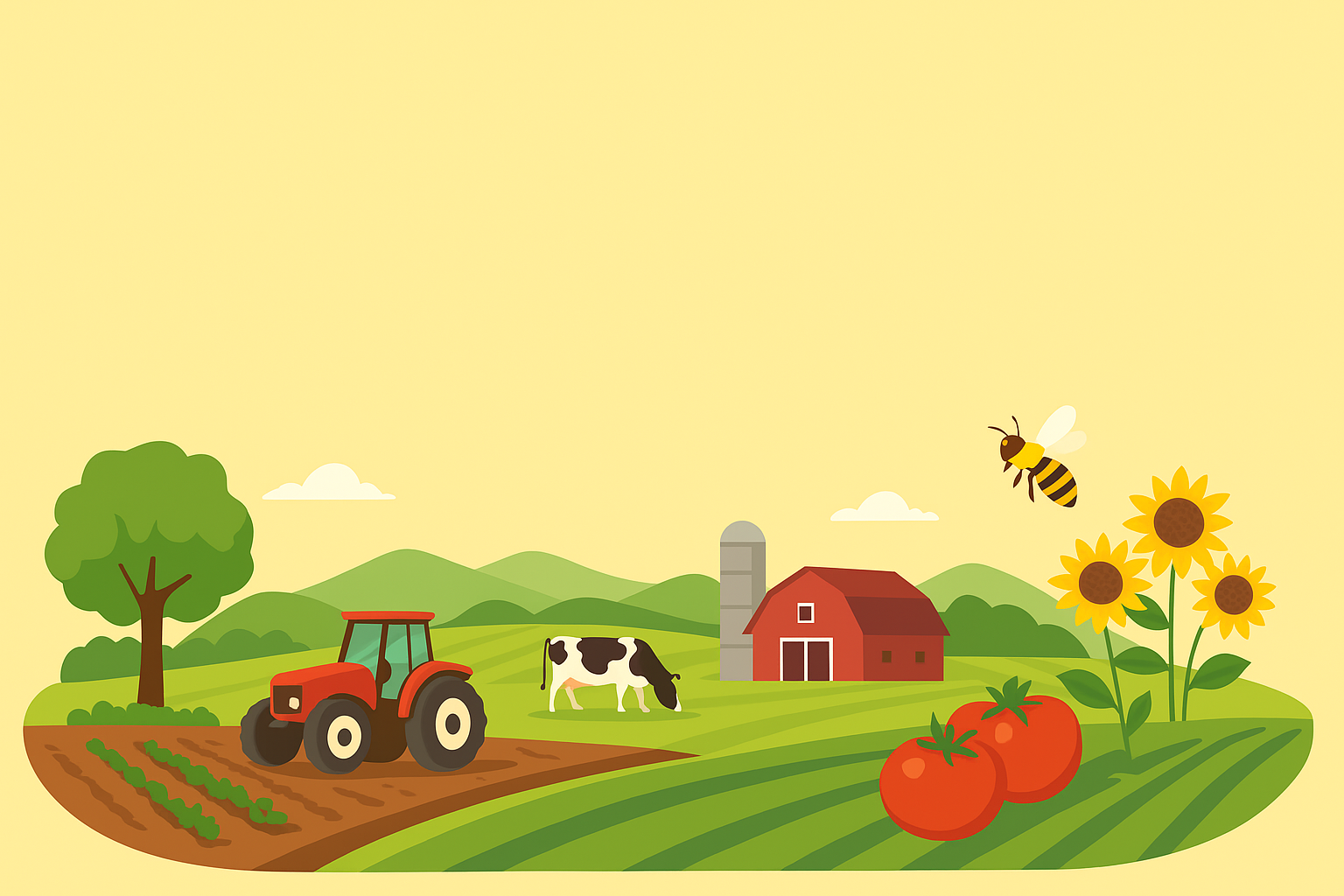Agriculture has been the backbone of human civilization for thousands of years, transforming nomadic lifestyles into settled societies. In India, it remains a vital pillar of the economy—contributing around 20% to GDP and providing livelihoods for nearly 60% of the workforce.
While the sector saw slow growth in the past decade, recent technological advancements and the rising interest of young entrepreneurs have sparked fresh momentum. Today, agriculture and allied activities offer high-profit potential—provided one chooses the right venture and manages it efficiently.
So, which farming is the most profitable in India? Let’s explore the top 15 opportunities.
1. Organic Farming
With growing health awareness, demand for chemical-free produce is at an all-time high. Organic farming avoids synthetic fertilizers, pesticides, and GMOs, focusing instead on natural methods.
Requirements:
Adequate land and clean water supply
Organic inputs (manure, bio-pesticides)
Certification
Pros: Premium pricing, high demand, better soil health
Cons: Long conversion period, more labor
2. Dairy Farming
Raising cows, buffaloes, or goats for milk production is one of India’s most stable agribusinesses. Milk and its products (cheese, paneer, butter) enjoy year-round demand.
Requirements:
High-quality breeds
Shelter, feed, clean water
Veterinary care
Pros: Steady income, scope for value-added products
Cons: High setup cost, market price fluctuations
3. Poultry Farming
Raising chickens, ducks, or turkeys for meat and eggs ensures quick returns. Separate breeds are used for meat and egg production.
Pros: High demand, fast ROI, multiple income streams
Cons: Disease risks, feed cost volatility
4. Goat Farming
Popular for both meat and milk, goat farming offers low startup costs and strong market demand—especially for festivals.
Pros: Low investment, high reproduction rate
Cons: Disease risks, land requirements
5. Beekeeping (Apiculture)
Producing honey, beeswax, and other bee products can be highly lucrative. Premium honey varieties fetch extremely high prices.
Pros: Low maintenance, high-value products
Cons: Weather dependence, bee sting risks
6. Mushroom Farming
Short growth cycles and high market value make mushrooms a profitable crop. Varieties like button, oyster, and shiitake thrive under controlled conditions.
Pros: Year-round production, high returns
Cons: Perishability, market fluctuations
7. Aquaculture (Fish Farming)
Raising fish like catla, tilapia, shrimp, and carp in ponds or tanks meets growing demand in India and abroad.
Pros: Export potential, fast growth cycle
Cons: Disease management, environmental concerns
8. Medicinal Plant Farming
Herbs like aloe vera, neem, tulsi, and ashwagandha are in demand for pharmaceuticals, Ayurveda, and cosmetics.
Pros: High-value, export-friendly
Cons: Long growth periods, market fluctuation
9. Floriculture
Growing flowers such as roses, orchids, and gerberas for bouquets, perfumes, and decoration is profitable, especially under greenhouse conditions.
Pros: High export demand, year-round sales
Cons: Perishable nature, high setup costs
10. Vermiculture
Producing vermicompost using earthworms turns organic waste into nutrient-rich fertilizer.
Pros: Low cost, sustainable, high demand
Cons: Slow production cycle
11. Saffron Farming
Known as the world’s most expensive spice, saffron requires specific climatic conditions but offers exceptional returns.
Pros: High margins, low labor needs
Cons: Limited suitable regions
12. Hydroponics
Soilless farming using nutrient-rich water enables year-round production of vegetables and herbs in controlled environments.
Pros: High productivity, minimal pests
Cons: High initial investment, technical know-how required
13. Fruit Farming
Mango, pomegranate, banana, guava, and citrus farming remain timeless profit-makers with good export scope.
Pros: Stable demand, value addition potential
Cons: Pest and disease risks, seasonal yields
14. Sericulture
India is the world’s second-largest silk producer. Rearing silkworms for silk fabric offers employment and income opportunities.
Pros: High-value product, strong demand
Cons: Seasonal, disease risks
15. Quail Farming
Raising quails for eggs and meat requires less space than poultry, with high egg production rates.
Pros: Low investment, nutritious products
Cons: Niche market challenges
Final Thoughts
From traditional options like dairy and fruit farming to modern methods like hydroponics and mushroom cultivation, India’s agriculture sector is packed with profitable opportunities.
Choosing the right venture depends on your skills, investment capacity, and local conditions. With proper planning, expert guidance, and market insight, farming can become a rewarding and sustainable business in today’s economy.

